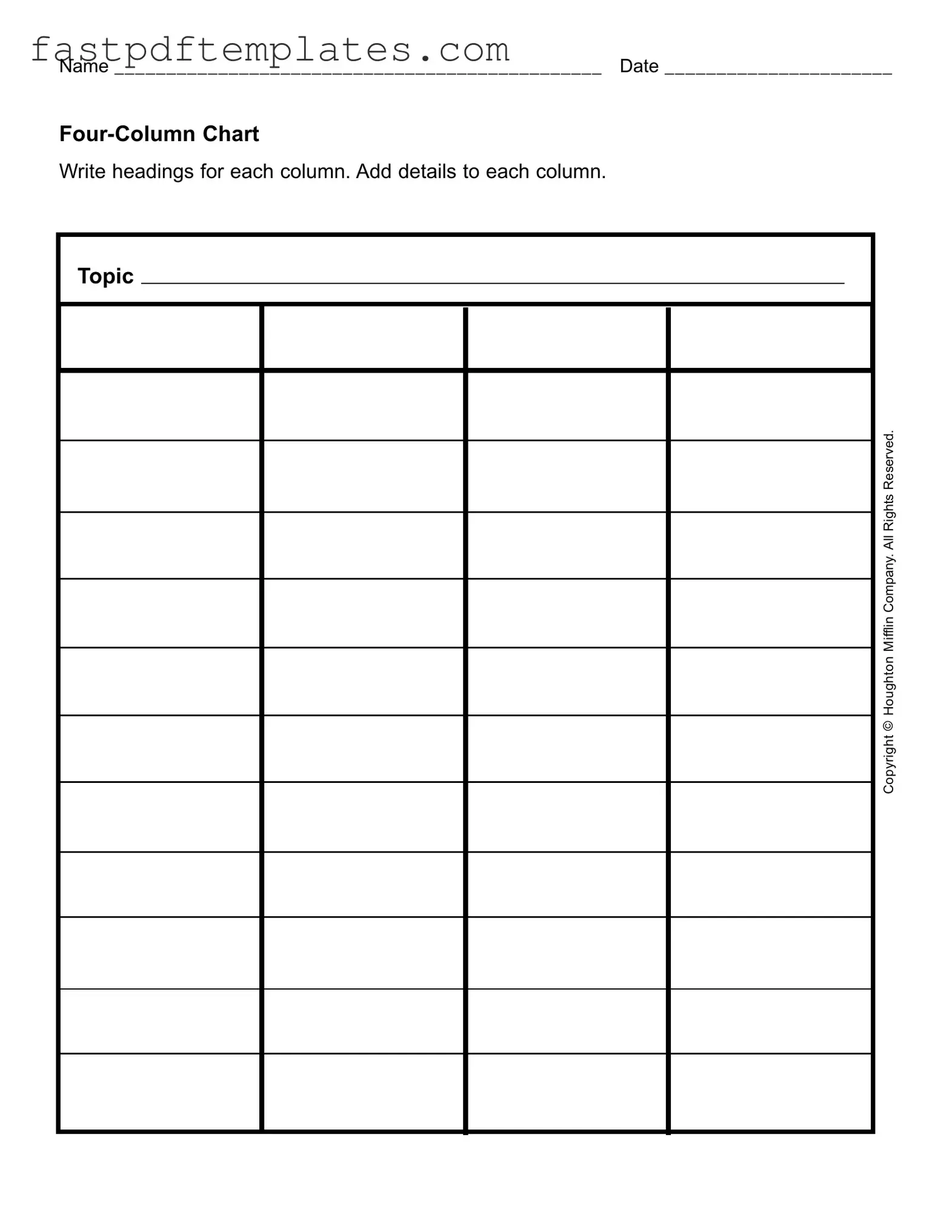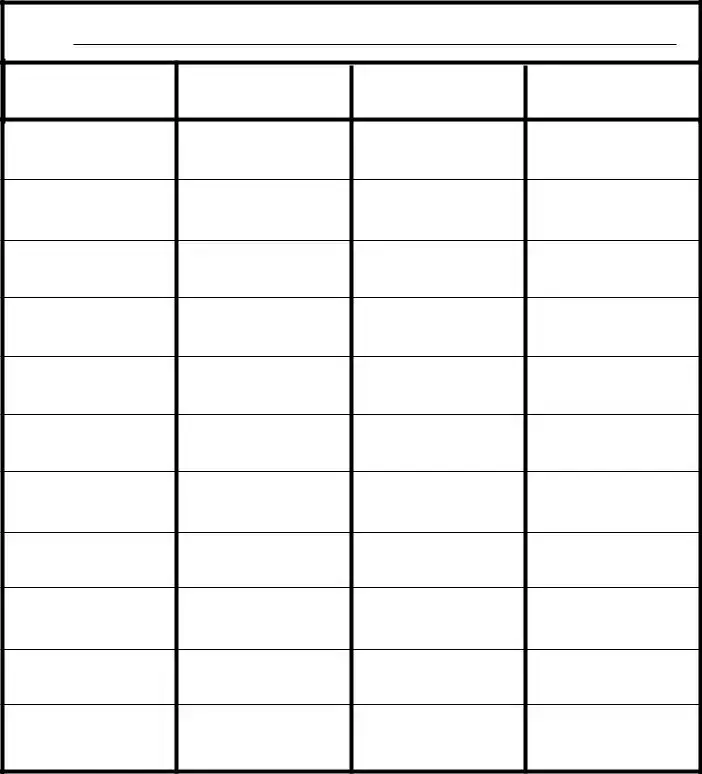The Four Column Chart form is similar to the T-Chart. Both forms allow for the organization of information in a clear and structured manner. In a T-Chart, users can compare two different ideas, concepts, or items side by side. This format helps in visualizing differences and similarities, making it easier to analyze the information presented. The straightforward layout aids in decision-making processes or evaluations.
Another document similar to the Four Column Chart is the Mind Map. A Mind Map presents information in a visual format, showing relationships between different ideas. Unlike the linear nature of the Four Column Chart, a Mind Map allows for a more free-flowing representation of thoughts. It encourages creativity and brainstorming, making it useful for planning and organizing complex topics.
The Venn Diagram is also akin to the Four Column Chart. This diagram illustrates the relationships between different groups or concepts through overlapping circles. It helps users identify shared characteristics and unique attributes. While the Four Column Chart organizes details into distinct columns, the Venn Diagram emphasizes connections and comparisons, which can enhance understanding of the subject matter.
The SWOT Analysis is another document that shares similarities with the Four Column Chart. This analysis tool breaks down strengths, weaknesses, opportunities, and threats related to a specific subject. Like the Four Column Chart, it organizes information clearly, allowing for strategic planning. The structured approach of both documents aids in evaluating situations comprehensively.
Flowcharts can also be compared to the Four Column Chart. Flowcharts depict processes or sequences of events visually. They use shapes and arrows to show the flow of information or actions. While the Four Column Chart lists details in columns, flowcharts represent relationships and steps in a process, making them useful for understanding workflows.
Another document that resembles the Four Column Chart is the Comparison Chart. This chart allows users to evaluate multiple items or concepts against specific criteria. It organizes data in a way that highlights differences and similarities. Like the Four Column Chart, it helps users make informed decisions based on clear, organized information.
The Outline format is similar as well. Outlines provide a hierarchical structure for organizing information, breaking down topics into main ideas and sub-points. While the Four Column Chart focuses on detailing specific aspects of a single topic, outlines help in organizing broader subjects systematically. Both formats aid in clarity and organization.
The Table is another document that shares characteristics with the Four Column Chart. Tables organize data into rows and columns, allowing for easy comparison and analysis. Similar to the Four Column Chart, tables present information in an orderly fashion, making it accessible and understandable for users.
Finally, the Report format can be seen as similar to the Four Column Chart. Reports often present findings or analyses in a structured way, detailing various aspects of a subject. While reports may include narratives and summaries, the Four Column Chart focuses on breaking down information into manageable parts. Both formats aim to convey information clearly and effectively.

